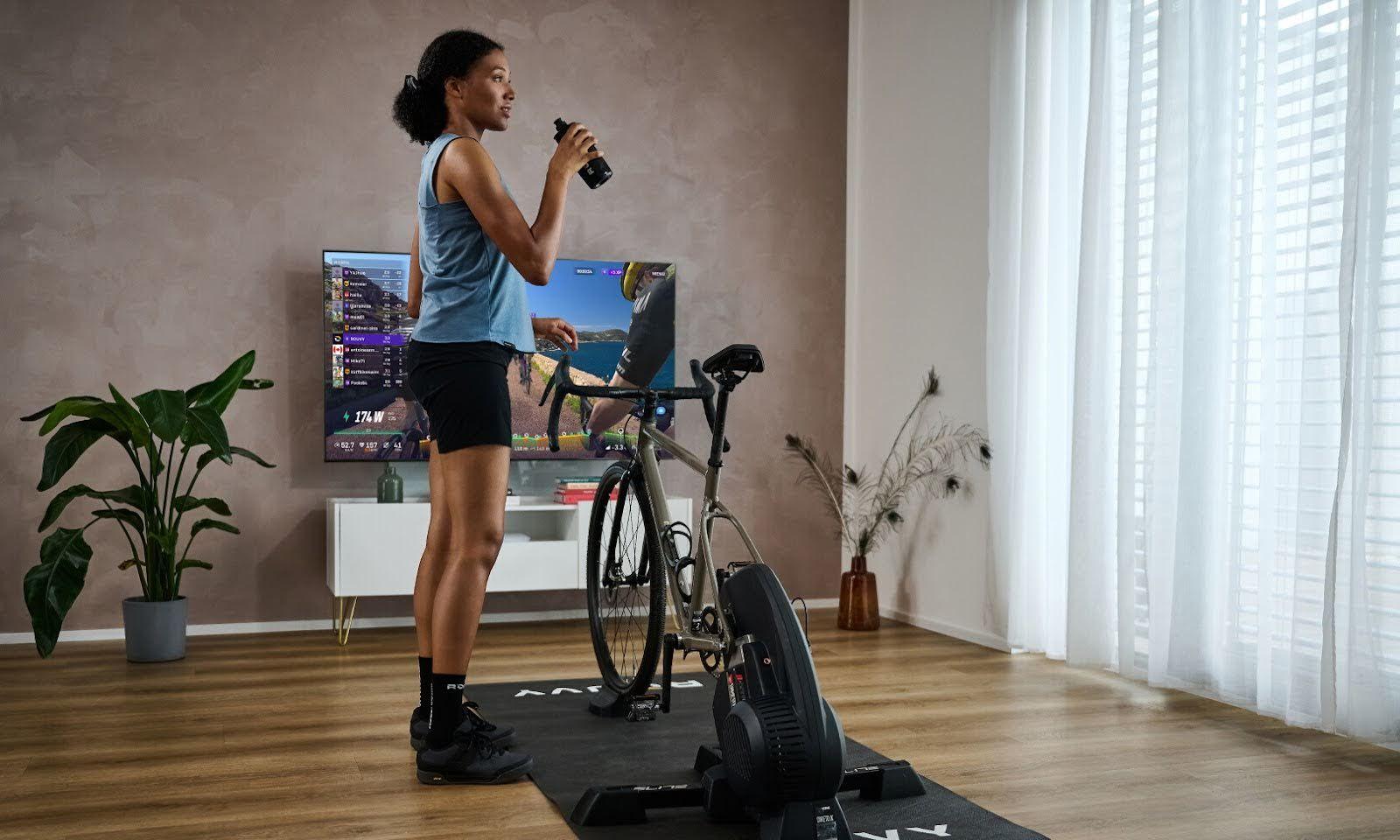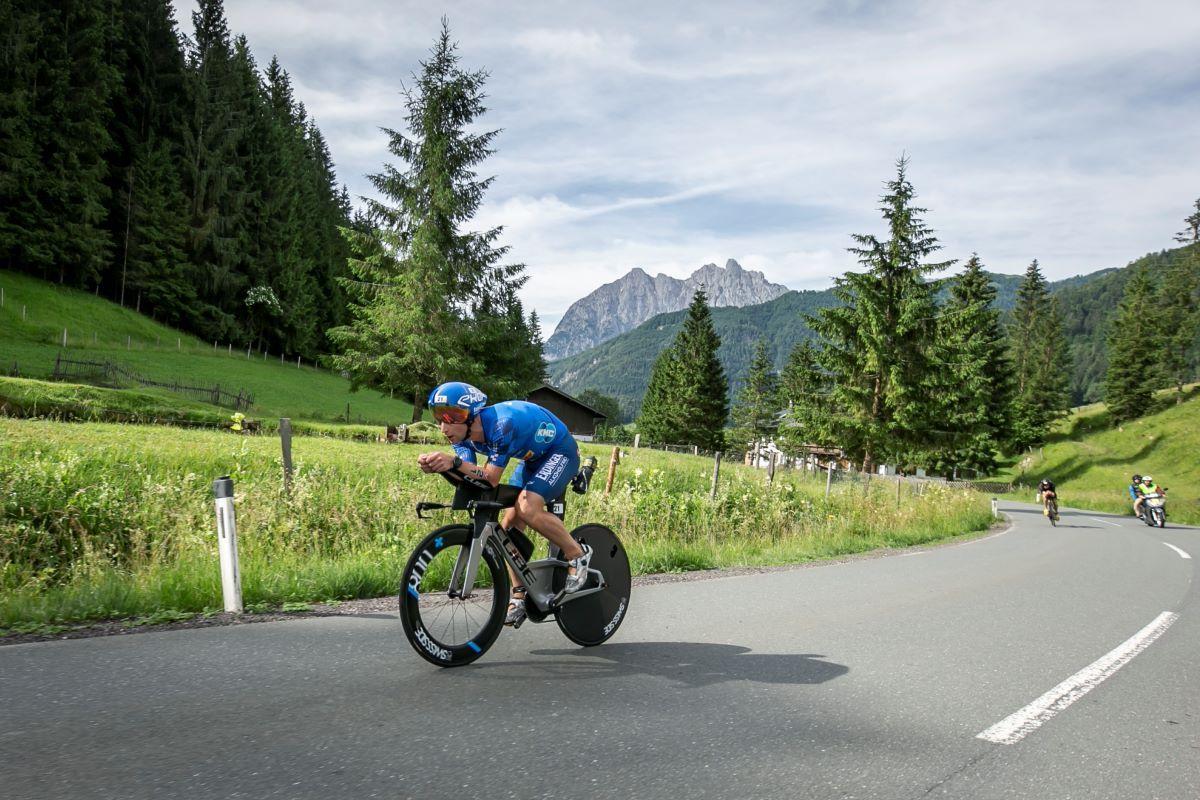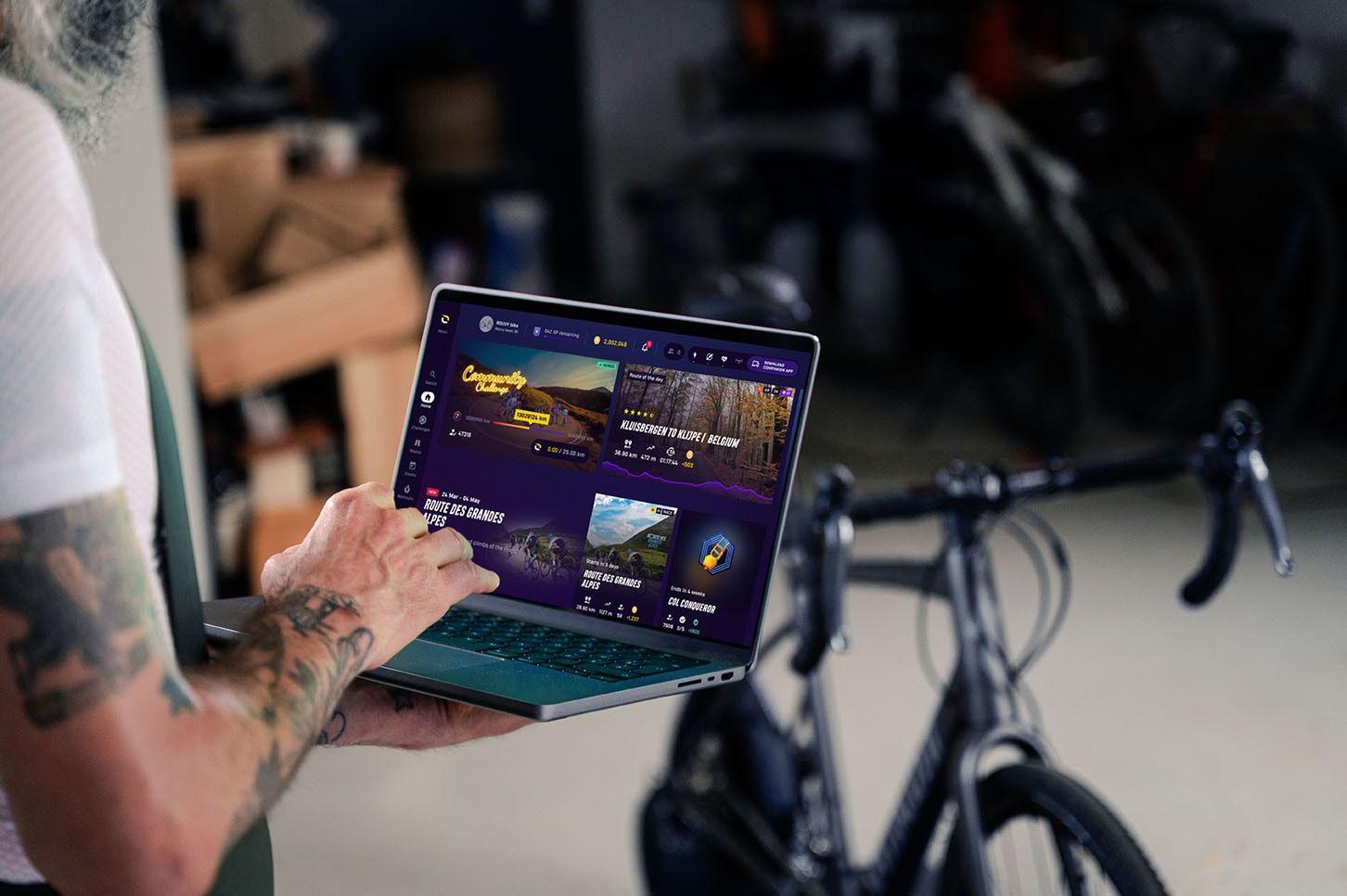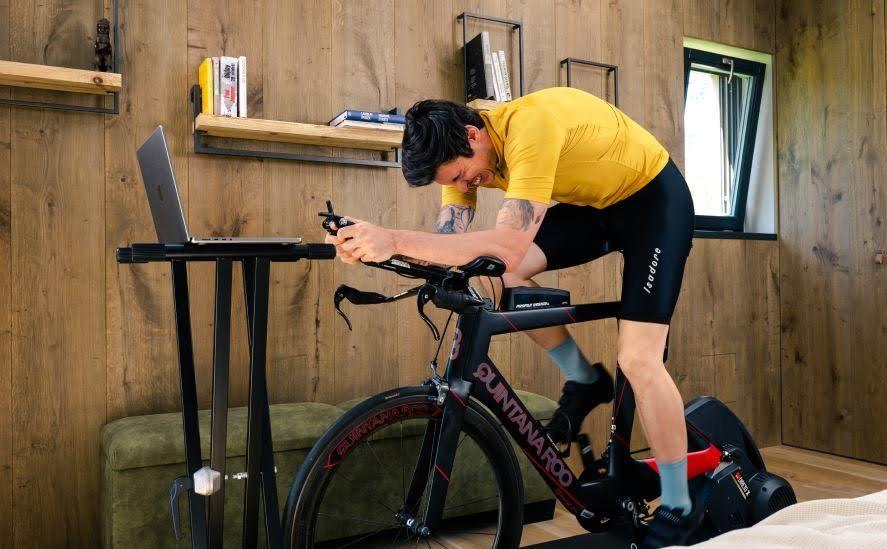Why cycling is great (but not a magic solution)
Cycling is one of the easiest and most enjoyable ways to get fitter and drop a few kilos. It’s low impact, so it’s more gentle on your joints than running, and you can do it almost anywhere: outside in the fresh air or indoors on a platform like ROUVY that lets you ride real-world routes from your living room. For beginners, it’s a realistic way to start moving again and build confidence.
But here’s the thing: cycling isn’t a magic fix. Weight loss happens when you consistently burn more energy than you eat. What cycling does is make that process more enjoyable and sustainable. It helps create a calorie deficit without feeling like punishment. When you combine it with sensible eating, good sleep, and regular recovery, cycling becomes a powerful tool for healthy fat loss.
Many people start cycling not just to lose weight but to feel better in their daily lives. Riding to work, taking short loops in the park, or hopping on a smart trainer in the evening soon becomes a habit. It’s a form of movement that doesn’t demand perfection or a gym membership: just a bike and a bit of time. Over weeks, it builds fitness quietly in the background until you suddenly realise how much easier the stairs feel or how your jeans fit you better.

How much cycling do you need to lose weight
Calories burned by time, speed, and body weight
The number of calories you burn depends on how hard and how long you ride, as well as your body weight. As a rough guide, someone weighing about 70 kg burns between 400 and 600 calories per hour cycling at a moderate pace of around 16–20 km/h. Heavier riders burn more because it takes extra effort to move a bigger mass.
If you weigh around 90 kg and cycle for 45 minutes three times a week, you’ll likely burn about 1,500–2,000 calories in total. That’s roughly equivalent to losing half a kilo every two to three weeks if you watch your diet at the same time. A cycling calorie burn chart can give a useful estimate, but remember: it’s just that, an estimate. Terrain, wind, and how fit you are will all affect your actual calorie burn.
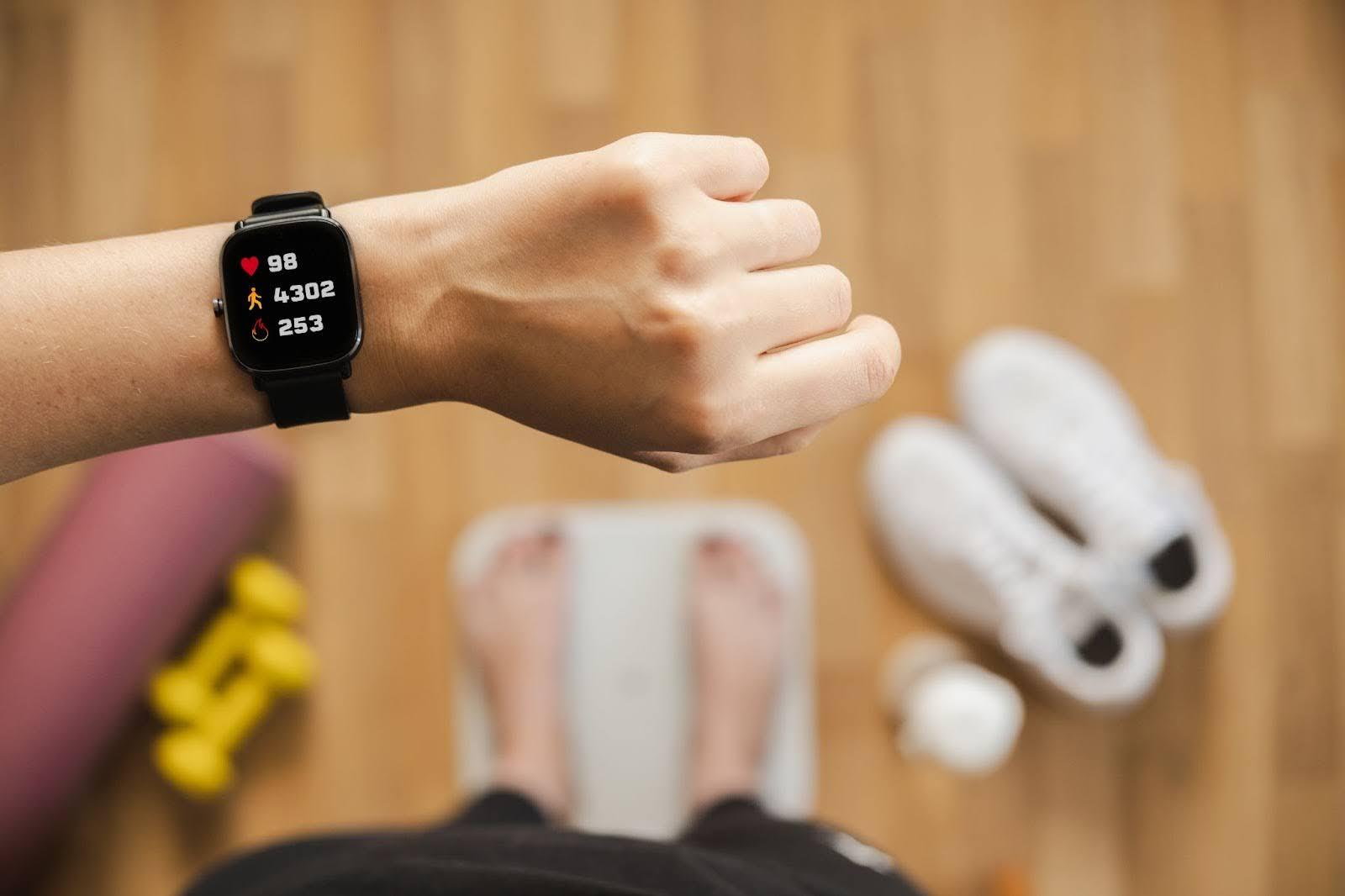
Key factors that influence energy expenditure
Power output is the biggest factor in determining how many calories you burn. If you’re riding with a power meter or smart trainer, you’ll get much more accurate feedback than relying on speed alone. Hills, headwinds, and gear choices all play a part, too: climbing slowly can burn more calories than cruising quickly on flat ground.
Fitness also makes a difference. As your body adapts, it becomes more efficient, which means you’ll burn slightly fewer calories doing the same ride. That’s actually a good sign of progress: it means you’re getting fitter. To keep moving forward, you’ll just need to tweak your intensity or duration every few weeks.
How to use intensity zones for better results
Beginners often ride too hard or too easily. Using heart rate or perceived effort to guide your rides can make training more efficient. Aim for most sessions to sit in the “talk test” zone, where you can chat comfortably but still feel you’re working. Over time, you can add in some sessions that require moderate to high effort. Training smarter rather than just longer helps you manage fatigue and stay motivated.
How often should you cycle for weight loss
Frequency and consistency tips for beginners
Consistency always beats intensity. For beginners, four to five 30- to 60-minute rides a week is a good goal to work towards to build a foundation and start seeing results. The key is to ride regularly and make it a weekly habit.
Ride at a comfortable pace where you can briefly chat to someone but cannot sing. Don’t worry about speed. Early on, it’s more important to finish each session feeling you could have gone a bit further. That approach keeps you coming back; it matters far more than any single “perfect” ride.
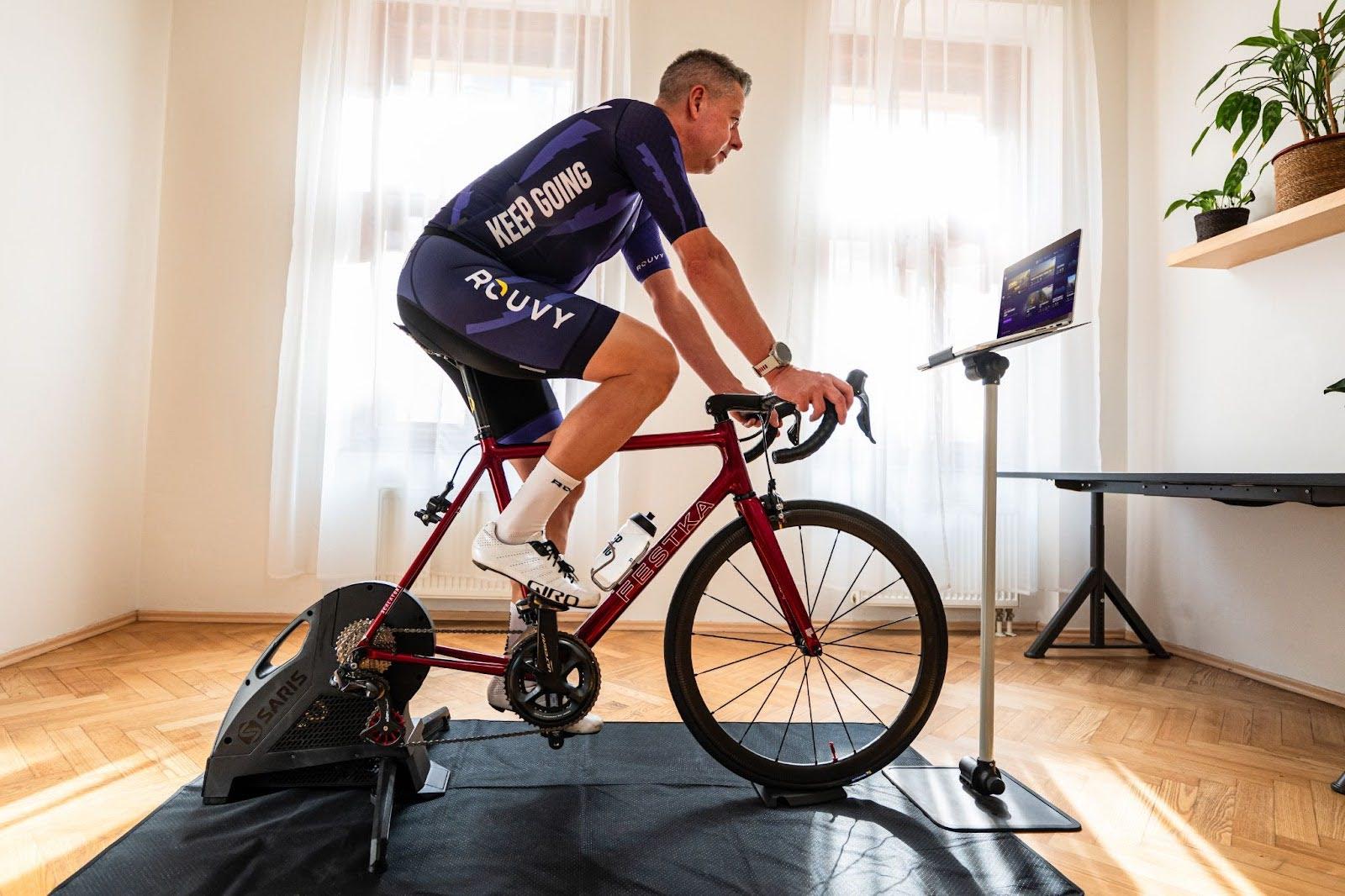
When and how to increase intensity safely
Once you’ve built a steady base, you can start adding a little variety. Try including two or three short bursts of faster riding during your sessions: 1 to 2 minutes slightly out of your comfort zone, followed by easy spinning. These intervals raise your heart rate, improve fitness, and increase calorie burn.
Keep your increases small and gradual. Adding 5 to 10 percent more effort or time each week is plenty. Structured indoor workouts on ROUVY make this simple by automatically adjusting resistance in ERG mode as your fitness improves, once you have estimated your FTP (Functional Threshold Power) using the Ramp Test, which guides you in figuring out this crucial training power number.
How long does it take to see real results
What’s realistic per week or month
A safe and realistic rate of fat loss from cycling is about 0.25-0.5 kg per week. It might not seem like a lot, but it’s sustainable and much more likely to stay off in the long term. Most beginners notice differences in how they feel: better sleep, more energy, improved stamina, within a few weeks. Visible changes in body shape usually emerge after about two to three months of consistent training and careful management of daily calorie intake, especially after riding.
Focus on more than just the scales. Notice how your endurance improves, how you recover faster, or how climbing a hill feels easier. These are real signs of progress.

How to stay motivated through plateaus
Everyone hits a plateau eventually. When progress slows, make small changes: add a longer weekend ride or switch to hillier local routes. Indoors, include a few ROUVY races each month, like the famous Muckers, GRC events, regularly scheduled group rides, or an Official ROUVY race. Try one of the recent ROUVY challenges.
Set short-term goals you can tick off. It might be completing your first 20 km ride, tackling a virtual iconic climb, or sticking to three sessions a week for a month. Celebrate each one. Those little wins keep you motivated when the scale doesn’t budge.

Is cycling alone enough to lose weight?
The role of nutrition, rest, and recovery
Cycling burns calories, but what happens in the kitchen and during recovery makes the real difference. You can’t out-ride a poor diet. Focus on eating balanced meals with lean protein, whole grains, and plenty of vegetables. Avoid cutting calories too harshly: it slows recovery and reduces energy for training.
Rest is equally important. Your body repairs itself between rides, not during them. Overtraining can trigger fatigue and cravings. Aim for seven to eight hours of sleep each night and one or two rest days per week.
Combining cycling with light strength work
Strength training helps preserve muscle and supports fat loss by boosting your metabolism. Two short weekly sessions of bodyweight exercises — such as squats, lunges, stomach exercises, and core work —are enough to make a difference. It complements cycling by improving strength, endurance, and tone while helping you burn more calories, even at rest.

The importance of everyday movement
Outside of structured rides, daily activity adds up. Walking more, taking stairs, or standing instead of sitting between rides naturally boosts calorie burn. Daily activity is often called “non-exercise activity thermogenesis” (NEAT). When combined with regular cycling, it’s a powerful yet frequently overlooked contributor to long-term fat loss.
Sample cycling weight loss training plan
Example 4–6 week beginner plan
Weeks 1–2: Ride three times a week for 30–45 minutes at an easy pace where you can talk comfortably.
Weeks 3–4: Add a fourth ride or extend one session to 60–75 minutes. Include two or three short, faster efforts (1–2 minutes each) in one ride.
Weeks 5–6: Ride five times per week and aim for one longer ride of 90 minutes. Add gentle climbs or virtual inclines using the slope control workout or a short climb on a ROUVY route to challenge yourself.
If you ever feel overly tired, shorten a session or take an extra rest day. Progress comes from consistency, not destroying yourself.
If you’re new to training plans, think of this as a suggested structure rather than a set-in-stone one. Life happens, and missing a session now and then won’t ruin your progress. What matters is building the habit. As your fitness improves, you can repeat the six-week block with slight increases in distance or duration.

